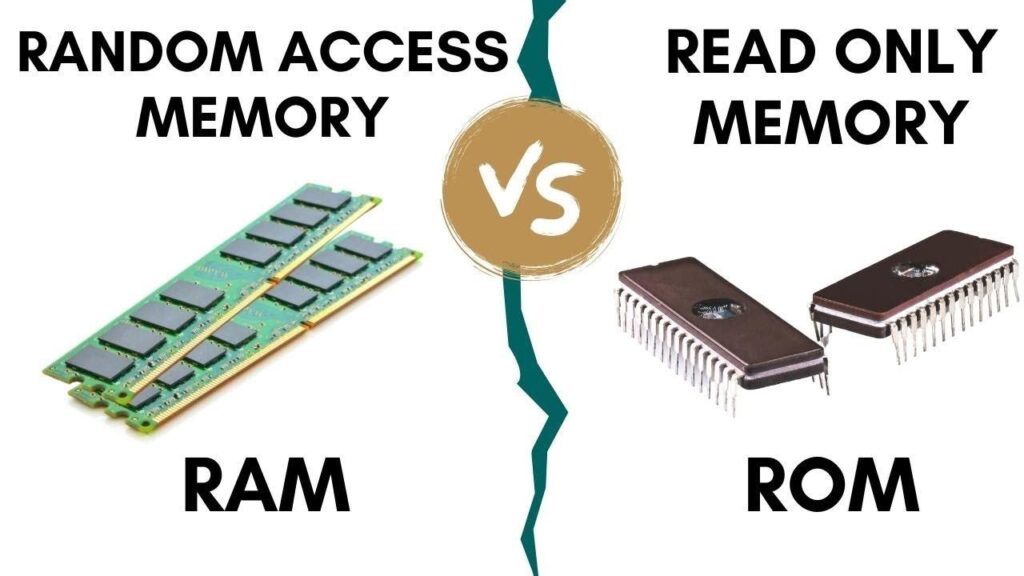RAM (Random Access Memory) and ROM (Read-Only Memory) are crucial parts of a computer. RAM is temporary storage that helps run applications quickly, storing data only while the computer is on. ROM, on the other hand, is permanent storage that holds essential instructions for starting up the computer, even when it’s off. While RAM is for short-term tasks, ROM is for long-term, essential data.
Let us know in detail what is theDifference between RAM and ROM.
Difference between RAM and ROM
RAM and ROM are both important parts of a computer system, but they serve different purposes. Here’s a breakdown of the key differences between RAM and ROM
Nature of Memory –
RAM –
RAM is volatile memory that stores data and machine code that the CPU (Central Processing Unit) needs currently or will need shortly. It is used for storing data temporarily while the computer is on and executing tasks. Data can be both read from and written to RAM.
ROM –
ROM is non-volatile memory that permanently stores firmware and instructions that do not change over the life of the system. It is used to store the BIOS (Basic Input/Output System) and other critical boot-up instructions required to start the computer. Data stored in ROM is typically read-only and cannot be easily modified or updated.
Access Speed and Performance –
RAM (Random Access Memory) and ROM (Read-Only Memory) differ in how quickly they can provide data to a computer. RAM is like a high-speed delivery service—it quickly retrieves data for the CPU to use, making tasks like running programs and multitasking smooth and fast.
ROM, in contrast, is more like a stable storage locker. It stores essential instructions needed to start up the computer and run basic functions, but it doesn’t change or update during regular use. Both RAM and ROM are crucial for a computer’s operation, each playing a unique role in storing and accessing data efficiently.
Storage Capacity and Size –
RAM –
Typically, RAM capacity ranges from a few gigabytes (GB) to several terabytes (TB) in modern systems.
Physically, RAM modules are relatively larger in size and require more physical space on the motherboard.
ROM –
ROM capacity is smaller compared to RAM and is usually limited to storing essential system instructions and firmware.
ROM chips are smaller in physical size compared to RAM modules.
Usage Scenarios –
RAM –
Used by operating systems and applications to store data temporarily for faster access. Examples: Running programs, temporary data storage, caching.
ROM –
Used to store permanent instructions required to boot the computer and initiate hardware components. Examples: BIOS, firmware updates, embedded systems.
Volatility and Persistence –
RAM –
RAM is volatile memory, meaning data is lost when power is turned off. It requires continuous power to retain stored data.
ROM –
ROM is non-volatile memory, meaning data is retained even when power is turned off. It does not require continuous power to maintain stored instructions.


